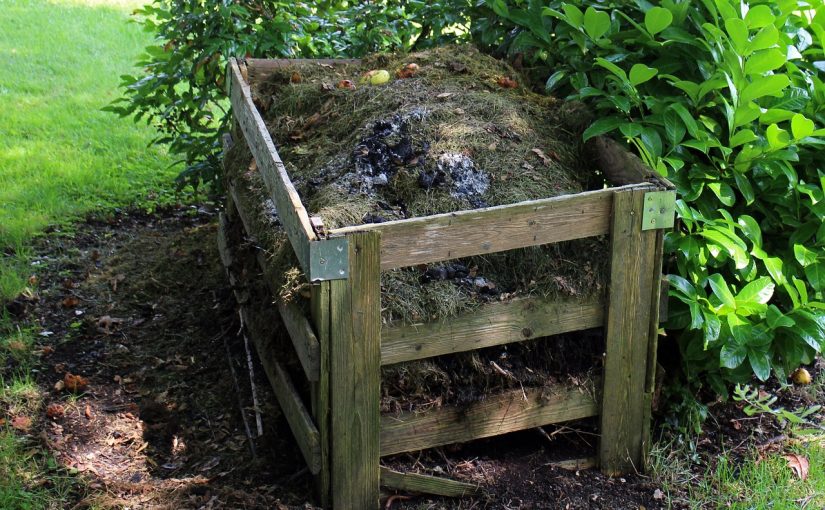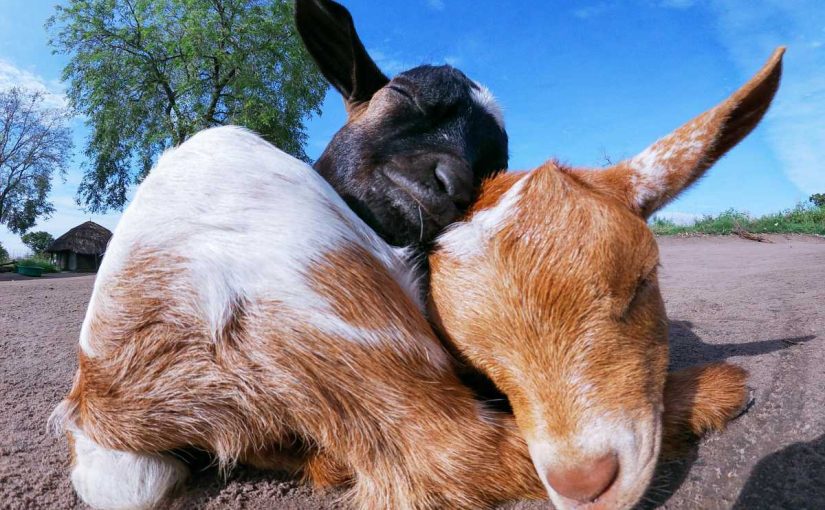Kiwi (Actinidia deliciosa) is a berry fruit. It is mainly oval and with brown skin and green flesh. It also has tiny black seeds that are edible. Though it is a bit sour but doesn’t have citric acid in it. It has a sweet and tangy taste. This plant is mainly grown in the winter season as it requires a temperature of less than 7° C.
Kiwi farming is carried out in sandy and loamy soil. This soil should be rich and well-drained. Kiwi is grown at a depth of 800-1500 m. So now the question arises: How long does it take a kiwi plant to produce fruit? Fruiting mainly depends upon the age of vines.
However, the yield of the plant increases after 1 year. Kiwi has high nutritive values, it is rich in vitamins and minerals. It has vitamin c, vitamin k, fibers, and potassium. Hence kiwi farming is very profitable.
Mainly there are 3 types of kiwi fruit. It has several health benefits. These are the grocery store kiwi ( Actinidia deliciosa), the next is a hardy kiwi (Actinidia arguta ), the last type is (Actinidia kolomikta).
Kiwi plantation:
In this, first of all, one would require one male vine for eight female vines. These vines are vegetatively propagated so these vines will be made to reproduce when you buy. The growth of hardy kiwis is very very fast.
Which type of soil is best for kiwi farming?
The soil should be well-drained and should have a higher amount of organic matter in it. Sandy and loamy soil are best for kiwi farming. The pH of soil required is a little less than 6.9.
At this pH maximum yield has been reported however if the pH increases to 7.3 it can badly affect the yield. As the cropping starts, nitrogen, phosphorus, potassium has to be supplied at regular intervals. 200kg of nitrogen, 55 kg of phosphorus, about 150kg of potassium are the doses required per hectare.
Suitable climatic conditions for growing kiwi:
As told earlier a cool climate is preferable for kiwi plantation however they can grow in almost every climate. The vines require a cold climate to set fruit. Less than 45° F is suitable for kiwi. These plants need to be protected from strong winds and frost.
Hence kiwi has to be protected from wind, autumn, and spring frost. The soil needs to be rich in moisture throughout the year. About 150cm of Rainfall is enough per year and it should be well distributed especially during growth periods.

During summer the temperature is more and the humidity is very low and this can cause scorching of leaves. Usually, heat stress and sunscald are the main problems in kiwi farming.
How to prepare the land for kiwi fruit production:
A steep land with rows is required for growing kiwis. The land should be prepared in such a way that enough sunlight falls towards the rows. The land has to be prepared thoroughly for the cultivation of kiwi.
The land should be plowed about 2 to 4 times and then followed by two harrowings. It is necessary to keep the soil free from any type of weeds otherwise the crop yield would be poor. While preparing pits for the kiwis, a mixture of farmyard manures and upper soil should be added to get high quality and productivity of the fruit.
Planting a kiwi fruit:
For kiwi plantation, it is very important to plant the fruit at correct distances and suitable methods have to be followed.
When the kiwi is grown at a commercial level, that time grafting method is mainly used for propagation. If this crop is grown at a proper distance then one can attain maximum fruit production. The distance between each row should be at least 3.5m whereas the distance between each plant has to be 6m. Usually, 2 main methods are used for plantation.
These two methods are: T- bar training system and the other is the Pergola training system. In the T-bar system, the above-mentioned spacing is required. In the Pergola system, the distance between each row should be 6m and the distance between the plants should be 5 to 6 m.
Also Read: Guide for Beginners of Kiwi Farming
Procedure to grow kiwifruit from the seed:
The first step is to get some kiwi seeds from the available kiwi fruit. Then place all these seeds in water and blend them to separate the gooey membrane from the seed. After this use a colander to water the kiwi seeds. Then soak these seeds by placing them smoothly on a paper towel. The next step is to put them in a ziplock and place it in a warm place.
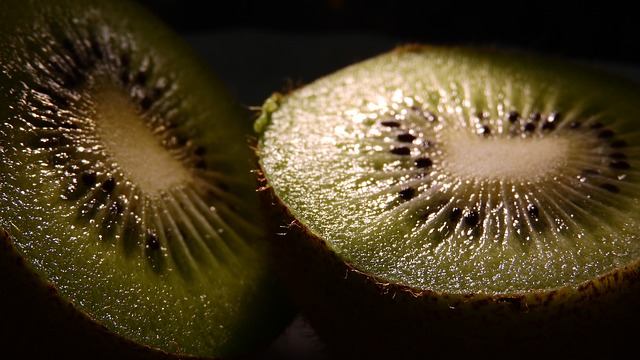
When you notice sprouting in the seeds, split the paper towel into tiny pieces and transplant them in the prepared put or the pot. Therefore take proper care of your plant for good quality fruit.
Irrigation in kiwi farming:
For a good quality crop, from time to time irrigation is a must. Like other crops, kiwi also needs regular water supplies. The hard variety of the kiwi fruit takes 3-4 years to become mature. Hence water has to be supplied regularly for 3 years of the plantation. But don’t overwater the plant as this may lead to mulch in the crop.
In hot and dry conditions water has to be supplied at regular intervals. At commercial level kiso farming, irrigating at intervals of 10-14 days is best for maximum production.
Application of manures and fertilizers:
The application of manures and fertilizers is also very necessary for high productivity. From time to time enough dose of suitable manure and fertilizers has to be supplied for a good yield. So one should use soil rich in organic matter like nitrogen, phosphorus, potassium, and other micronutrients and macronutrients.
Other than this a dose of farmyard manure should be added before planting it in the main field. After 5 years of plantation, adding these manures and fertilizers have excellent results. A high amount of Cl is also necessary for the crop as its deficiency can cause adverse effects on the growth of the crop and even on roots and shoots. On the other hand surplus amounts of boron and sodium can be harmful to crops.
Pruning and training of kiwi crop:
For better production of the crop, pruning and training are very important. In training Wooden, concrete, or iron pillars are used to provide support to the vines. Adjust these pillars 5 to 6 meters apart. The pillars should be 1.6 to 2.1 m long above the ground. Fence or wire can be used to provide support to the pillars.
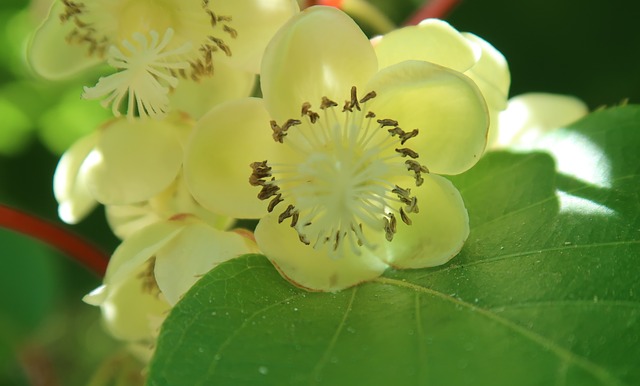
Pruning: Along with proper training, pruning is also very essential for high yield. It is very important to remove or cut off the unwanted and undesirable parts that may suck the essential nutrients from the plant.
Hence canes from the making part of the flower have to be removed along the excessive wood grown along with the plant. Also, separate off the extra tangles from the plant.
As kiwi is not a self-pollinating plant, hence there’s a need for good pollination also.
Harvesting of kiwi:
Mainly kiwi attains its full size after monsoons however it still may not be ready for harvesting. It could be ready to harvest in early winter as till then the seeds become black and sugar levels also rise however after harvesting the kiwi, the starch turns into sugar. And finally, the fruit is ready to eat.
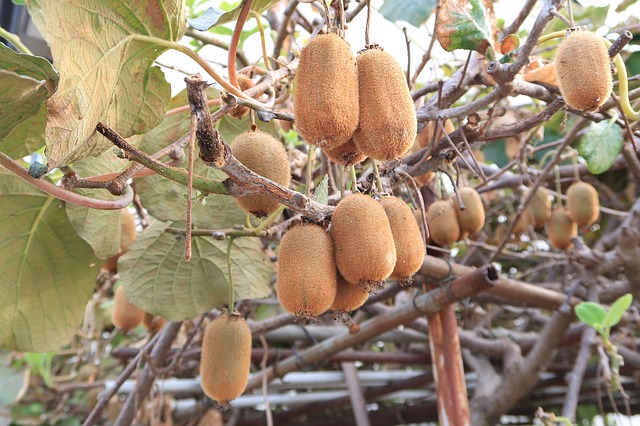
Also, a refractometer can be used to determine if the sugar level is optional and the kiwi is ready to harvest or not. About 6.5 percent or more is the optimal sugar level. Vine-ripened kiwi has the best Taste however cannot be stored for much time.
When the kiwi is grown at a commercial level, harvesting has to be done all at one time however if one grows it in a home garden then they can harvest it according to their need in the harvesting period but harvest the large-sized kiwi first and let others remain inside to grow more. Kiwi has to be handled with care during harvesting and the kiwi that has been damaged cannot be stored.
Diseases: Armillaria Root Rot (4/13), Bacterial Blight (4/13)
Bleeding Canker (4/13),
Botrytis Fruit Rot (6/16)
Crown Gall (4/13)
Phytophthora Root and Crown Rot (6/16)
Water Staining, Juice Blotch, and Sooty Mold of Fruit (4/13) are some kiwi diseases whose symptoms are Vines may completely collapse; white mycelial mats may be present under bark close to the soil line, there’s a change in the color of cortical tissue and white mycelial strands are also present; root-like rhizomorphs extend from roots into the soil.
These needed to be controlled as soon as possible. Make sure that land being used for new kiwi plantings is gotten rid of roots which have diameter greater than 1 inch; ensure kiwi vines are properly watered but not too much. Further, diseases can be controlled by avoiding injuries that lead a way for pathogens to enter the body. At this time, no chemical control strategies are available.
Health Benefits of kiwi:
Kiwi has several health benefits and many nutritional values. Some of the benefits are as follows:
1. Kiwi is an incredible source of vitamin C, vitamin E, and antioxidants.
2. Kiwi fruit has anti-aging properties and is also very beneficial for the skin. It improves skin health.
3. Kiwi fruit also helps in enhancing the respiratory system of the body.
4. Kiwi is very good for the eyes. It improves eyesight and is also helpful in protecting our eyes from several diseases.
5. Kiwi fruit helps us to improve our digestive system from where a large number of disorders and diseases can happen if digestion is not proper.
6. It is also very helpful in the improvement of cardiovascular diseases The kiwifruit possesses properties that lower blood pressure. By helping to maintain healthy blood pressure and providing a boost of Vitamin C, the kiwifruit can reduce the risk of stroke and heart disease.
7. Kiwi is a rich source of vitamin k that helps to make the bones strong.
8. It has many antibacterial and antifungal properties.
9. It helps with sleep disorders.
10. Along with the fruit its roots also have good properties.
It is also good for immunity asKiwi contains abundant amounts of Vitamin C, which stimulates the body’s immune response. The kiwifruit contains roughly 230% of the daily recommended intake of Vitamin C. This amazing fruit is loaded with immune-boosting nutrients in every bite.
In kiwi fruit. high amounts of dietary fiber are present in skin as well as in flesh. Fiber aids reduction of constipation and
other gastrointestinal issues and discomfort.
Treatment of Asthma
The presence of Vitamin C in kiwis has been proven to reduce wheezing symptoms in some asthma patients. This is true in children, who are benefitted the most from the consumption of kiwis.
Ocular Health
The high levels of antioxidant vitamins and carotenoids found in the kiwifruit may help in preventing eye disease and promote ocular health but only if it is consumed with other healthy and mineral rich vegetables and fruits.
Conclusion:
Kiwi is a very healthy profitable crop with high nutritive values. Kiwi is said to be a treasure of health benefits.
Reference link:
https://www.agrifarming.in/kiwi-farming-information#
https://agriculturegoods.com/kiwi-fruit-cultivation-guide-for-beginners-of-kiwi-farming/
https://www.gardeningknowhow.com/edible/fruits/kiwi/harvesting-kiwi-fruit.htm



